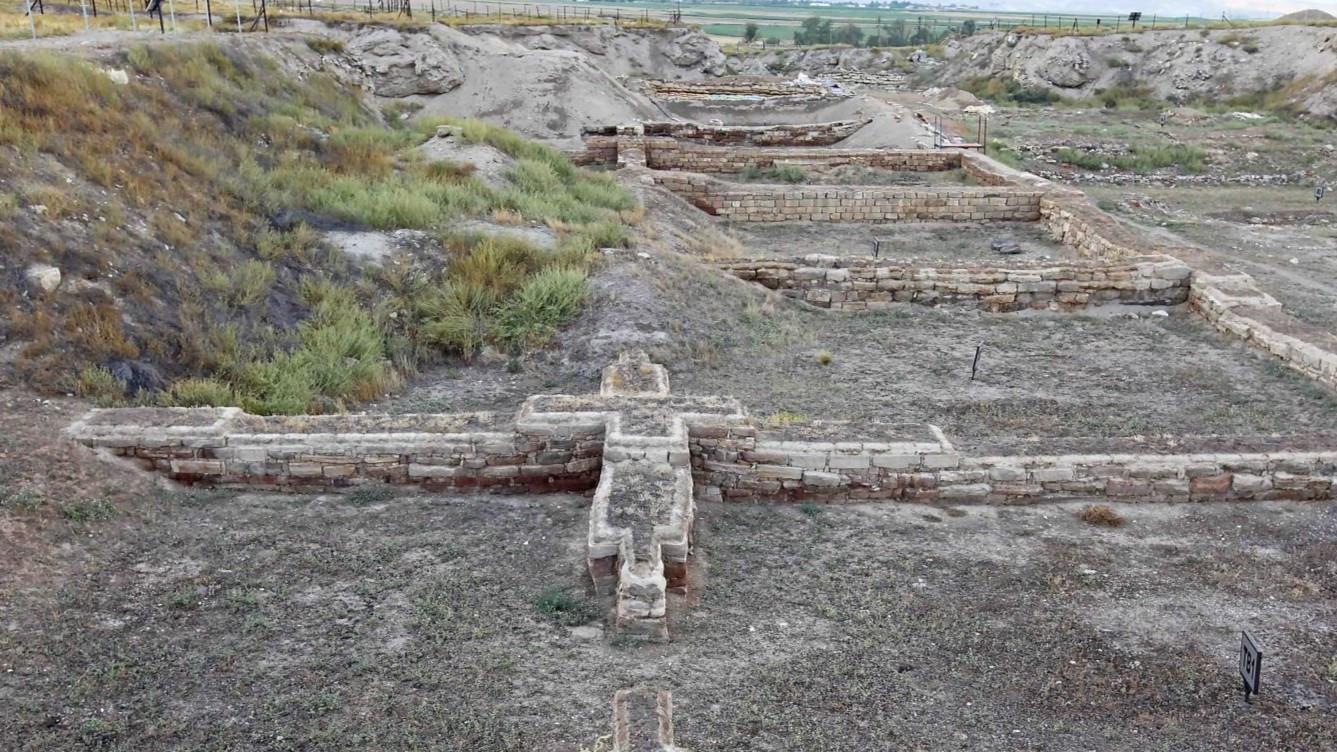
A cremation tomb believed to belong to a Phrygian king or high-ranking official dating back to the eighth century B.C. has been unearthed in the ancient city of Gordion, located in Ankara’s Polatlı district.
Archaeologists recovered more than 100 artifacts, including a rare linen-wrapped bronze vessel, from what is now recorded as the 47th tumulus on the site.
Speaking to the state-run Anadolu Agency after the unveiling of the artifacts in the garden of the Gordion Museum, Gordion Excavation Coordinator Professor Yücel Şenyurt, a faculty member of Ankara Hacı Bayram Veli University, stated that one of the most striking finds was a bronze jug wrapped in linen and placed in the tomb 2,700 years ago.
“It is extremely rare to find a textile of this scale and integrity,” Şenyurt said. “Thanks to the protective effect of bronze corrosion, the organic material was preserved.”
The excavation, which began in September and lasted four months, was conducted in a 12-by-12-meter area using a team of 15 workers and six archaeologists.
Standing 8 meters high and measuring about 60 meters in diameter, the tumulus is considered one of Gordion’s mid-sized burial mounds. Despite the collapse of the wooden burial chamber under the weight of soil and stone over time, over 100 objects were found intact, including 88 museum-quality bronze and iron items.
Among the objects were large cauldrons, three-legged pots, and incense burners. Forty-seven of the items have been restored, with work ongoing for others.
“This tumulus is now the earliest known example of cremation burials among the Phrygians,” Şenyurt added. “The presence of ashes and luxurious grave goods clearly indicates the buried individual was not ordinary.”
He also emphasized the diversity of burial practices in ancient Anatolia, where cremations and inhumations coexisted. “The remains of the cremated individual were wrapped in fabric, though we found them in a partially scattered state.”
Şenyurt underlined the significance of the findings for understanding Phrygian funerary customs and the political history of Gordion. Despite 75 years of continuous archaeological work, many areas remain unexplored.
“Every excavation season in Gordion holds the potential for new discoveries,” he said. “There’s still more unexcavated area than what has been explored.”
‘Possibly a member of Midas’ family’
Charles Brian Rose, the head of the Gordion Excavation Project and a veteran archaeologist who has worked in Türkiye for 45 years, said the discovery was an important addition to the understanding of Phrygian culture.
Rose, who previously conducted excavations in Aphrodisias and Troy, noted that the artifacts and the dating of the 47th tumulus place it close to the same period as the monumental tomb built for King Midas’ father.
“Given its location and timeframe, it is possible that this tomb belonged to a member of Midas’ family,” he said. “What’s especially interesting is that this is a cremation burial, which was quite rare in eighth century Gordion. Most individuals were buried intact in tomb chambers.”
“The types of vessels surrounding the body are nearly identical to those found in Midas’ Tumulus,” he added.
Rose also spoke about the future of Gordion and the importance of preserving the site. “No ancient city can be excavated forever,” he said. “But we will continue efforts to educate children about the site.”
“The most important thing we’re doing in Gordion is the preservation of ancient monuments. The more visitors come to Gordion, the more it benefits the local economy and ensures the site is cared for. Preservation is not only about maintaining structures but also about drawing in broader communities to understand the significance of the site.”